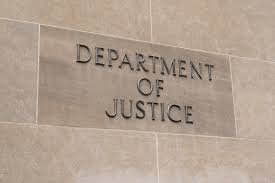Incentives and Disincentives as the New Engine of Effective Compliance (Part I of III)

Some were surprised by the recent move by the Department of Justice in focusing on the importance of incentives and disincentives as an important factor in an effective ethics and compliance program. Others, however, had been waiting for years to this occur. To these compliance professionals, DOJ was finally arriving, although late to the game.
If we take a step back, the issue is nothing new, although the emphasis an creative expansion of the tool to address compliance behavior is a new and welcome addition to the chief compliance officer’s toolbox.
In its infancy, DOJ stressed the need for compliance professionals to create positive incentives for ethical conduct, including awards, annual employee performance reviews, and other carrots offered to officers and employees. At the same time, companies already focused on a strong disincentive – termination of employment. As time went on, however, these tools in the toolbox became less effective and was a strong “motivational” force. More was needed and perhaps appropriately, two significant enforcement actions underscored this gap in the incentive-disincentive framework. Coupled with these two enforcement actions was the fact that DOJ’s large fines were being questioned because of their direct impact on shareholder wealth and failure to focus on the financial benefits earned by actors who committed misconduct.
Let’s start with considering two major enforcement actions that underscored the incentive-disincentive framework – the first was Wells Fargo, and the second was Novartis.
Wells Fargo
In the Wells Fargo debacle, the bank suffered serious repercussions from its sales incentive program, referred to as the “8 for 1 program,” pursuant to which sales staff and managers were required to meet sales requirements of eight accounts for every client. This incentive program was coupled with a strong negative reinforcement mechanism whereby failure to meet these requirements would result in immediate discipline and even firing. The sales program skewed incentives to such a point that numerous sales staff engaged in fraud, opened fake accounts, and ordered credit cards without the customer’s consent or even desire. (My mother in law, a Wells Fargo customer, was a victim of this program and at age 75 found that a sales emplpoyee had ordered her 3 new Certificates of Deposit that she never requested).
At the top levels, however, the program made money for Wells Fargo and leaders earned significant bonuses and compensation notwithstanding the loss of over 5000 sales staff and sinking morale. The culture was so rotten that eight whistleblowers who raised concerns about the program were actually terminated because of raising concerns.

Notwithstanding its evident error, Wells Fargo continues to suffer the consequences of its failure to assess incentives and disincentives in its business. Three CEOs have come and gone, some of the bonus money paid to one CEO, John Stumpf, was partially clawed back, and Wells Fargo continues to sit in the ethical doghouse under strict Federal Reserve monitoring and restriction on growth. Even in the face of these challenges, Wells Fargo cannot build a basic structure of internal controls and structure to meet regulatory requirements.
Novartis
Not to be outdone, Novartis joined the scandal-plagued club alongside Wells Fargo, when in the space of two weeks, Novartis settled an FCPA case involving foreign bribery violations in a variety of foreign countries and then two separate cases for $51 million and $677 million, respectively, for domestic bribery under the anti-kickback and False Claims Act violations.
In the FCPA case, Novartis (and Alcon) agreed to pay $345 million in criminal and civil penalties for bribery schemes in Vietnam and Greece.
In the domestic cases, Novartis paid $51 million to settle illegal use of three foundations use to funnel co-payments of Medicare patients taking Novartis’ drugs Gilenya and Afinitor, which are used to treat relapsing multiple sclerosis and advanced renal cell carcinoma, respectively. Novartis payments constituted kickbacks that were intended to increase usage of its drugs by paying patients’ co-payment obligations.
In the second matter, Novartis paid $677 million for paying bribes to doctors to prescribe approximately eleven Novartis drugs using a pervasive and corrupt speaker program. The blatant bribery scheme was built around incentivizing doctors to prescribe Novartis drugs by paying them for so-called educational events at lavish restaurants, wineries, golf clubs and other sports venues. For example, Novartis held sham events on 75 occasions at Hooters. Some of the events, for which physicians were pai, never even occurred.
In response to these scandals, Novartis put in place a new and important compensation program to incentivize compliant behavior. Under this plan, Novartis senior management was barred from receiving any bonus payment in addition to their salary without satisfying comprehensive ethics and compliance mandates. These requirements extended beyond those basic measures, such as attending mandated training, meeting compliance procedures and policies, and other stanard expectations. In other words, to unlock access to substantial bonus payments, senior manager were required to meet specific compliance requirements.

Novartis took this access to bonus carrot (or stick however you interpret it) and used it to leverage compliant behavior.
Both the Wells Fargo and Novartis cases highlight the impact that incentives and disincentives may have beyond the standard set of tools. In each case, tweaking these tools created either significant risks of non-compliant behavior or created a backstop to ensure compliant behavior.
DOJ and the compliance community our new on the verge of breaking out new tools, incentives and disincentives through the ongoing consultation process. Where it all ends up will be interesting and more changes are sure to come as DOJ and the compliance community gains experience in this area.















